Greya
Greya moths
Olle Pellmyr


This tree diagram shows the relationships between several groups of organisms.
The root of the current tree connects the organisms featured in this tree to their containing group and the rest of the Tree of Life. The basal branching point in the tree represents the ancestor of the other groups in the tree. This ancestor diversified over time into several descendent subgroups, which are represented as internal nodes and terminal taxa to the right.

You can click on the root to travel down the Tree of Life all the way to the root of all Life, and you can click on the names of descendent subgroups to travel up the Tree of Life all the way to individual species.
For more information on ToL tree formatting, please see Interpreting the Tree or Classification. To learn more about phylogenetic trees, please visit our Phylogenetic Biology pages.
close boxIntroduction
Since the recognition that greya moths are closely related to yucca moths, they have become the subject of many studies by evolutionary biologists who use them to learn more about plant-insect coevolution (Thompson 1987, Pellmyr et al 1996).
The genus Greya currently has 18 described species, with most of them occurring in western North America. The are small- to medium-sized moths active during the day. Wing coloration varies from a uniform gray, yellow or white, to striking speckled or checkerspot patterns.
At least three species that visit flowers carry host plant pollen on their bodies and accidentally cause pollination as they visit the flowers. Accordingly, some of them contribute to the fertilization of their hosts (Pellmyr and Thompson 1992, Thompson and Pellmyr 1992, Pellmyr et al 1996). Some of them also have larvae that feed on developing seeds, so there are striking biological similarities with the yucca moths. The greya moths lack all special behaviors and morphological features that characterize the actively pollinating yucca moths, however, and comparative studies provide insights into the ecology and evolution of mutualism between plants and their herbivores.

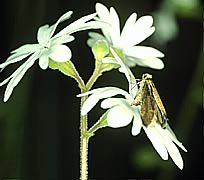
Greya politella ovipositing into and accidentally pollinating a Lithophragma flower
Characteristics
The monophyly of Greya is based on:
- a long, narrow membranous zone on the inner surface of the valva in the male genitalia
- a prominent pollex on the ventral margin of the valva (one species has a pectinifer in this position; it may be retention of the ancestral state or a result of a reversal.). See figures below.
- reversed size dimorphism between the sexes, with males being larger than females.
Valvae of G. enchrysa and G. piperella showing pollex.
Life habits of immature stages
Species for which oviposition has been observed oviposit either into floral ovaries, young seeds or stems. In seed-eating species, the larvae complete one or two instars and then abandon the structure before aestivation (Thompson 1987, Davis et al. 1992). Greya politella later resumes feeding inside a woven leaf shelter on its host plant, and it pupates inside it as well (Davis et al 1992).

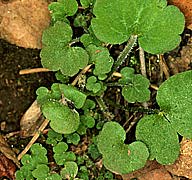
Lithophragma with folded leaf shelter containing a G. politella larva.
Geographic distribution
The genus has radiated primarily in the western North America, with fifteen species described from the northern Yukon Territory south to the USA.- Mexican border, and from the Pacific coast east to the Black Hills of South Dakota, USA. Distribution maps are provided in Davis et al. (1992). Three species, including two endemics, have recently been reported from Japan and easternmost Siberia (Kozlov 1996).
Discussion of Phylogenetic Relationships
Greya has been the subject of extensive phylogenetic analysis based on morphological (Davis et al 1992), molecular, and combined data sets (Brown et al 1994). Obtained topologies were largely congruent, and the combined analyses provided complementary strengths in resolving poorly resolved nodes.
Three highly distinctive, well-supported groups (see tree) occur within the genus; they are supported by morphology and DNA sequence data, and share major life history features. In the solenobiella group, powelli is the sister group of solenobiella+suffusca or of all other members of the group. Greya obscuromaculata branched off near the divergence point between the solenobiella and punctiferella groups, and appeared as sister taxon to the solenobiella group in the DNA data set and to the punctiferella group in the morphological data set.
The revisions of Greya provided two of the first unequivocal cases of paraphyletic species because distinctive species had such recent origins that they were nested in terms of mtDNA within the ancestral taxony (Brown et al 1994). Greya mitellae was nested within G. piperella, and G. suffusca was nested within the widely distributed G. solenobiella.
Among the incertae sedis, Kozlov suggested that the Asian species G. kononekoi and G. marginimaculata were closely related to Berinigian G. variabilis, and thus should be quite basal within the genus. The third incertae sedis, G. sparsipunctella, is only known from a type series of three females, and because the majority of traits used in the morphological matrix only appear in males it was not included. A single synapomorphy with G. variabilis and G. pectinifera and occurrence in moist climate may suggest basal affinities.
N.B.: One undescribed species is known, and it will appear here after formal description.
References
Brown, J.M., O. Pellmyr, J.N. Thompson & R.G. Harrison. 1994. Phylogeny of Greya (Lepidoptera: Prodoxidae), based on nucleotide sequence variation in mitochondrial cytochrome oxidase I and II: congruence with morphological data. Mol. Biol. Evol. 11:128-141.
Davis, D.R., O. Pellmyr & J.N. Thompson. 1992. Biology and systematics of Greya Busck and Tetragma n. gen. (Lepidoptera: Prodoxidae). Smiths. Contrib. Zool. 524:1-88.
Kozlov, M.V. 1996. Incurvariidae and Prodoxidae (Lepidoptera) from Siberia and the Russian Far East, with descriptions of two new species. Ent. Fenn. 7:55-62.
Pellmyr, O. and J. N. Thompson. 1992. Multiple occurrences of mutualism in the yucca moth lineage. Proceedings of the National Academy of Sciences of the USA 89:2927-2929.
Pellmyr, O., J.N. Thompson, J. Brown & R.G. Harrison. 1996. Evolution of pollination and mutualism in the yucca moth lineage. Amer. Nat. 148:827-847.
Thompson, J.N. 1987. Variance in number of eggs per patch: oviposition behaviour and population dispersion in a seed parasitic moth. Ecol. Entom. 12:311-320.
Thompson, J.N. & O. Pellmyr. 1992. Mutualism with pollinating seed parasites amid co-pollinators: constraints on specialization. Ecology 73:1780-1791.
Title Illustrations

| Scientific Name | Greya enchrysa and Heuchera cylindrica |
|---|---|
| Specimen Condition | Live Specimen |
| Behavior | Greya enchrysa ovipositing into Heuchera cylindrica |
| Sex | Female |
| Image Use |
 This media file is licensed under the Creative Commons Attribution-NonCommercial License - Version 3.0. This media file is licensed under the Creative Commons Attribution-NonCommercial License - Version 3.0.
|
| Copyright |
© 1996

|
| Scientific Name | Greya punctiferella and Tiarella |
|---|---|
| Specimen Condition | Live Specimen |
| Behavior | Greya punctiferella ovipositing into Tiarella |
| Sex | Female |
| Image Use |
 This media file is licensed under the Creative Commons Attribution-NonCommercial License - Version 3.0. This media file is licensed under the Creative Commons Attribution-NonCommercial License - Version 3.0.
|
| Copyright |
© 1996

|
| Scientific Name | Greya piperella, Heuchera cylindrica |
|---|---|
| Specimen Condition | Live Specimen |
| Behavior | Greya piperella ovipositing into inflorescence stalk of Heuchera cylindrica |
| Image Use |
 This media file is licensed under the Creative Commons Attribution-NonCommercial License - Version 3.0. This media file is licensed under the Creative Commons Attribution-NonCommercial License - Version 3.0.
|
| Copyright |
© 1996

|
About This Page

University of Idaho, Moscow, Idaho, USA
Page copyright © 1996
 Page: Tree of Life
Greya. Greya moths.
Authored by
Olle Pellmyr.
The TEXT of this page is licensed under the
Creative Commons Attribution-NonCommercial License - Version 3.0. Note that images and other media
featured on this page are each governed by their own license, and they may or may not be available
for reuse. Click on an image or a media link to access the media data window, which provides the
relevant licensing information. For the general terms and conditions of ToL material reuse and
redistribution, please see the Tree of Life Copyright
Policies.
Page: Tree of Life
Greya. Greya moths.
Authored by
Olle Pellmyr.
The TEXT of this page is licensed under the
Creative Commons Attribution-NonCommercial License - Version 3.0. Note that images and other media
featured on this page are each governed by their own license, and they may or may not be available
for reuse. Click on an image or a media link to access the media data window, which provides the
relevant licensing information. For the general terms and conditions of ToL material reuse and
redistribution, please see the Tree of Life Copyright
Policies.
- First online 13 January 1997
Citing this page:
Pellmyr, Olle. 1997. Greya. Greya moths. Version 13 January 1997 (under construction). http://tolweb.org/Greya/12414/1997.01.13 in The Tree of Life Web Project, http://tolweb.org/




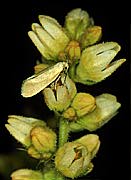
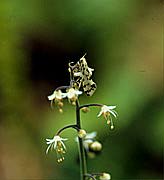

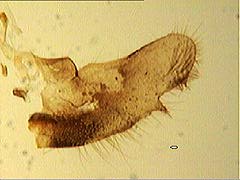
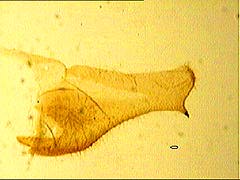




 Go to quick links
Go to quick search
Go to navigation for this section of the ToL site
Go to detailed links for the ToL site
Go to quick links
Go to quick search
Go to navigation for this section of the ToL site
Go to detailed links for the ToL site